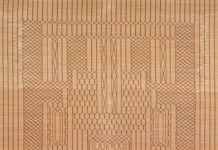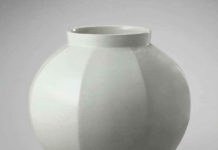South Korea
Yeomjang (bamboo blind-making)
Yeomjang refers to the skill of making bal, a traditional blind, and an essential and popular article used in traditional Korean houses. Bal prevented...
Wanchojang (sedgework)
Wanchojang refers to the craft of making receptacles with sedge, a rush-like plant with a one or two year life span that is grown...
Textiles
South Korean textiles is particularly known for its delicate weaving and needlework. The materials of special use include cotton, silk and hemp. Key techniques...
Tanggaonjang (hat making)
Tanggeomjang refers to the craft of making tanggeon, a type of hat to be put on before wearing a gat, and worn by men...
Nakjukjang (bamboo pyrography)
Nakjukjang refers to the skill of carving pictures or words into a piece of bamboo by scorching it with a red-hot iron. Nakjuk, or...
Manggeonjang
Manggeonjang refers to the craft of making manggeon, a type of male headband used before wearing a gat in order to make sure that...
Lacquer
Lacquer is a distinctive Korean craft dating back 2,000 years. Traditionally, it is found in anbang and sarangbang (a main room and a reception...
Gannil (horsehair hat-making)
Gannil refers to the skill of gat-making. The gat, a horsehair hat, was an item of formal attire denoting nobility that was worn by...
Dancheongjang
Dancheong is a form of ornamental painting that is applied to royal palaces, temples and shrines. Dancheong is based on the five colours, blue,...
Chaesangjang (bamboo cases with coloured designs)
Chaesangjang refers to the art of dyeing slices of bamboo skin with different colors and making boxes by braiding them together. Chaesang was a...
Doja
Doja (ceramics) is a key part of the cultural heritage of the Republic of Korea (also known as “South Korea”). Its presence can be...
Bulhwajang (Buddhist Painting)
Bulhwajang refers both to the art of bulhwa (Buddhist painting) and to a highly skilled Buddhist painter. In Korea, where Buddhist painting has long...













